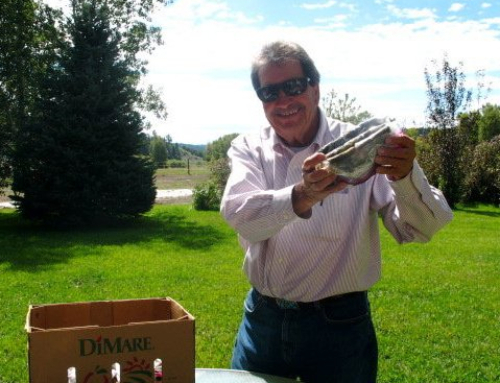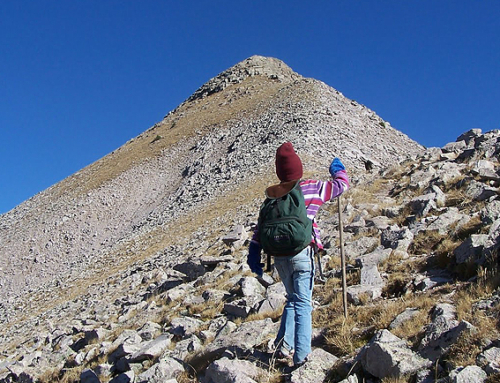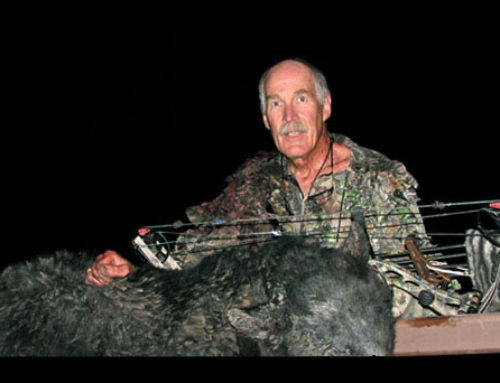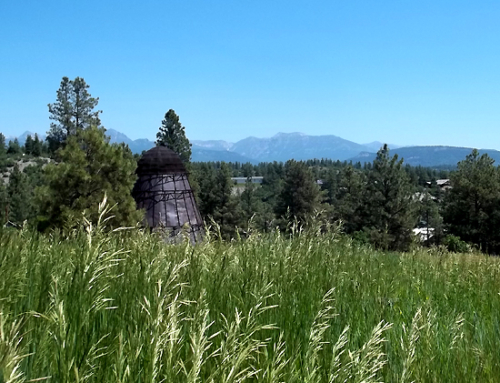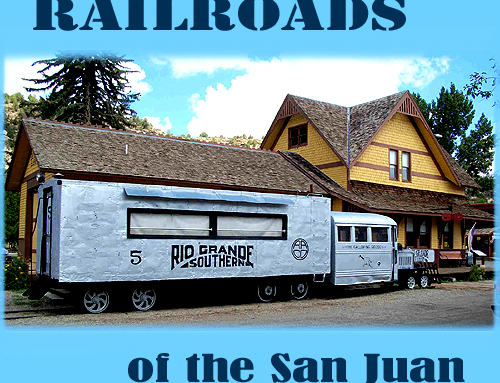A Settlers’ History at the Turn of the Century
by Norm Vance with Jewel Walton
This interview was done a few years ago before Jewel passed away.
People, individuals and families are moving to the Pagosa Springs area in big numbers. Homes and buildings are being erected in town and along most every road in the county. New roads are being built into once pristine valleys allowing even more construction. Old timers of the area are feeling the pressure of new comers and change. Some don’t mind the growth at all, and others are down right angry about it.
Yes, we are talking about the 90s, but not the 1990s – here we will discuss the growth boom of the 1890s. One hundred years ago the Pagosa area was having the same type of rapid growth we are experiencing now, only more. In 1890 the county’s population was about 800, in 1900 it was 2,000, and in 1910 it had grown to 3,000. If that growth rate had continued there would be a million people living in the county today!
The newcomers, then as now, were good people. Their children and grandchildren became the “natives” who have been the strength of the community over the last century.
The Jacobson family arrived in the middle of summer 1898 along with sixteen other families. Groups of people moving from other areas was not uncommon then. Much like the earlier days of wagon trains moving west there was security and a built in support group when many families changed locations together. This article is written from the memories of Jewel Walton who was the daughter of Olaf Jacobson. Olaf was the son of Joseph and Miriam who brought the family to Colorado. Olaf married Agnes Donaldson in 1910 and began preparations to move onto land to “homestead.” At that time and until the 1930s people could homestead land and obtain ownership after meeting certain standards. Jewel’s memories from her early years detail how this was done and the work and hardships involved and some charming memories of the good times.
In the late 1880’s and early 1890’s large lumbering companies were clear cutting vast forests of ponderosa pine and spruce across the area. Many places that are now open spaces were thick with trees. A common way for clearing land for ranching and farming was to sell the trees for timber. The mills would take the trees and then the stumps were burned leaving tillable soil. Olaf did this work over one summer.
The open space that did exist was covered with tall grass. Jewel remembers the grass being “so high only a buck deer’s antlers could be seen above it. When the wind blew it formed waves that moved across the open spaces like waves on an ocean.”
In 1913 Olaf filed a claim to homestead a 160 acre parcel in O’Neal Park, northwest of Pagosa Springs. Work on the land required tools including several axes and wedges to harvest trees for building a house, other buildings, and fence. Olaf had harnesses for a two horse wagon he used to move the trees and other heavy and bulky items. Single and double handled cross cut saws were used to cut trees to useful sizes and shapes. Snow and dirt shovels were needed and Jewel notes that cows and chickens helped with food on the early homestead.
During 1913 and 1914 Olaf worked on the house, outhouse, barn, and chicken house. For a no concrete foundation he cut aged pine snags that were solid pitch. This wood stood-up to weather conditions and rested directly on the earth for many years without rotting. He trimmed two sides flat, leveled them and nailed them together with railroad spikes.
There was a small log mill in the Upper Piedra River Valley and Olaf made several trips hauling rough cut planks from the mill to build the house with. Framed windows and door were purchased but cupboards and counters were smoothed from rough cut planks using hand planes. The walls were three boards thick with the planks at different angles to each other. They had tar paper between the boards to keep the wind out and add a bit of insulation. The house and roof was covered with “Rubberoid Roofing,” an early tar and rubber compound that Jewel said had a gavel finish. Olaf’s dad, Jacob, helped by building a fireplace and chimney as the house went up.
Jewel remembers the outhouse toilet was a two holer with a small hole made just for her. Olaf had a loving sense of humor. She also recalls the low barn’s roof was covered with soil. The soil was good insulation and once plants grew it was fairly sturdy and waterproof. This was a common type of barn construction at that time and examples can still be seen in the San Luis Valley along highway 160. Lamb’s quarters grew in this barn roof soil. They made “good cooking greens the Jacobsons ate with chicken or grouse, milk gravy and mashed potatoes.”
Olaf was lucky to have neighbors on three sides whose property was already fenced, so he only had to cut and split post and fence one side of the homestead.
Olaf had a garden in the rich virgin soil during summer. He dug a deep pit close to the house. In Autumn he put a layer of straw on the bottom and filled it with potatoes, onions, carrots, beets, parsnips, and turnips. On top of the vegetables a layer of straw was covered with two feet of loose dirt. The vegetables didn’t freeze and were dug-out all winter as needed. Arch Dunn, a neighbor, rode horseback in deep snow to bring fresh milk every few days. His arrival was a social occasion.
Winter was hard in O’Neal Park. Deep snow fell and working on the homestead was difficult. There was little that Olaf could do so he often stayed in town with his parents and worked with the Cotton brothers at their ice house. There is a wide bend in the San Juan River just down from the east bridge . At the time the Cotton’s had a barn on the river bank. In summer they hauled large volumes of sawdust from nearby lumber mills. During winter Olaf helped cut blocks of ice from the frozen river which were hauled into the barn and insulated with the sawdust. The Cotton’s sold the ice to Pagosans all summer. This bend in the San Juan has been called Cotton’s Hole ever since.
By 1915 the homestead was up to standard and Olaf was granted title to the land. Times got better as the garden grew excess wheat and barley and the livestock grew in numbers. They had plenty to eat and sold the excess in town. They added a new kitchen, bedrooms, dining room, and painted the house cream yellow with blue trim. The home sat in a thick grove of aspen.
Jewel has many fond memories from this pioneer childhood. 1915 was a big year. Her aunt sent a doll with a leather body and China Porcelain head. Before Jewel’s birthday Olaf disappeared at times and sounds of construction came from the barn. Little Jewel was “ordered not to come close and I kept trying to guess the nature of the project.” Soon she was surprised with a “beautiful doll bed that mother painted pink.”
A big time was when several families carried supplies and barrels of water up to Devil’s Mountain area to pick and can wild raspberries. They harvested, cooked down and canned them on the spot!
Jewel pointed out that “going to town from O’Neal Park was an all day or even two day trip at that time.” Using a wagon in summer and a sleigh in winter was slow going on the unimproved road. She remembered heating stones and wrapping them in blankets using them to keep their feet warm in the sleigh.
Other memories that come back are boiling water and adding lye to wash cloths, collecting wild bee honey, making wild peppermint tea, helping Olaf harvest grain the night before a storm by holding a lantern, learning from her first teacher by observing nature, and Jewel “can still see Dr. Mary Fishers face leaning over my bed applying a poultice to my chest when I was sick.”
These pioneer days in Pagosa Country were certainly difficult by modern standards, but were also harsh by the standards of their time. Consider that the San Juan area was one of the last settled in the United States because of its high altitude and rough nature. Most of the rest of the country was settled and more comfortable at the time. We should all revere and respect the strong willed and hardy pioneers who settled here.

